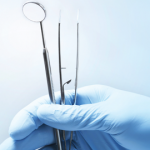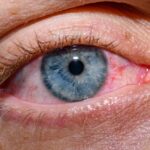CHICAGO—People with scleroderma face many dental challenges related to oral fibrosis that can greatly disrupt their lives; the situation is made worse because dentists and rheumatologists aren’t talking to each other to share information, said Andrew Leask, BSc, PhD, a distinguished professor at the University of Saskatchewan College of Dentistry in Canada, who spoke on the topic Overview of Periodontal and Gingival Disease in Scleroderma and Sjögren’s Disease at ACR Convergence 2025.
Oral Manifestations
Scleroderma is an autoimmune disease that attacks healthy tissue and triggers fibrotic action in the body including the oral cavity. This can lead to dry mouth, tooth loss and decay, poor or difficult oral hygiene, tongue rigidity and other symptoms that could be overlooked as being associated with the autoimmune disease.
The symptoms are often stressful, causing physical pain and emotional discomfort, Dr. Leask said. They can also contribute to psychological difficulties because patients feel self-conscious about their appearance, affecting how they interact with people daily.
When a patient has fibrosis in the oral cavity, it can be difficult for them to open their mouth, speak and swallow, which combined with pain and loss of teeth can lead to malnutrition. Although the condition and issues surrounding it are not immediately life-threatening, they take a toll on patients overall and have a negative impact on quality of life. “I cannot emphasize it enough, despite the fact that it’s not directly causing mortality, it is affecting severely the well-being of the patients on a daily basis,” Dr. Leask said.
The situation is made worse because “dentists have no idea what they’re looking at” and because of the disconnect between the dentistry and rheumatology communities, Dr. Leask said. “They haven’t communicated with each other adequately.”
Good Communication Critical
Good communication could be clinically critical to patients, especially those who have not yet been diagnosed, Dr. Leask said. The oral cavity and fluids inside it, which are easy to access, could be used to help diagnose scleroderma. For example, tooth loss and gingival retraction without bleeding could indicate scleroderma. Those same symptoms and dry mouth may also be associated with salivary fibrosis, he said.
When dentists are more informed about patients who have scleroderma, they can take steps to address concerns. Some examples include using a moisturizer or a balm around the patient’s mouth to make it easier to manipulate and giving water as often as possible to alleviate dry mouth and ease discomfort, Dr. Leask said.



